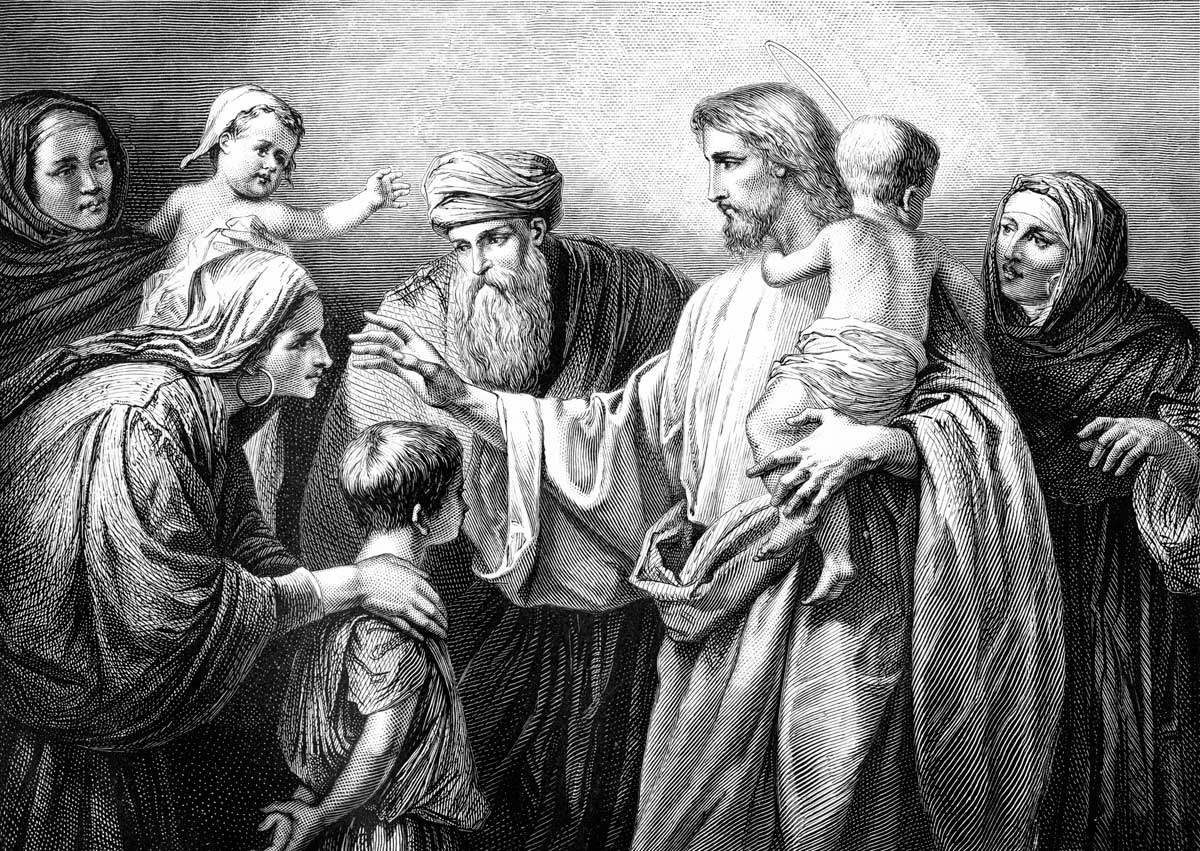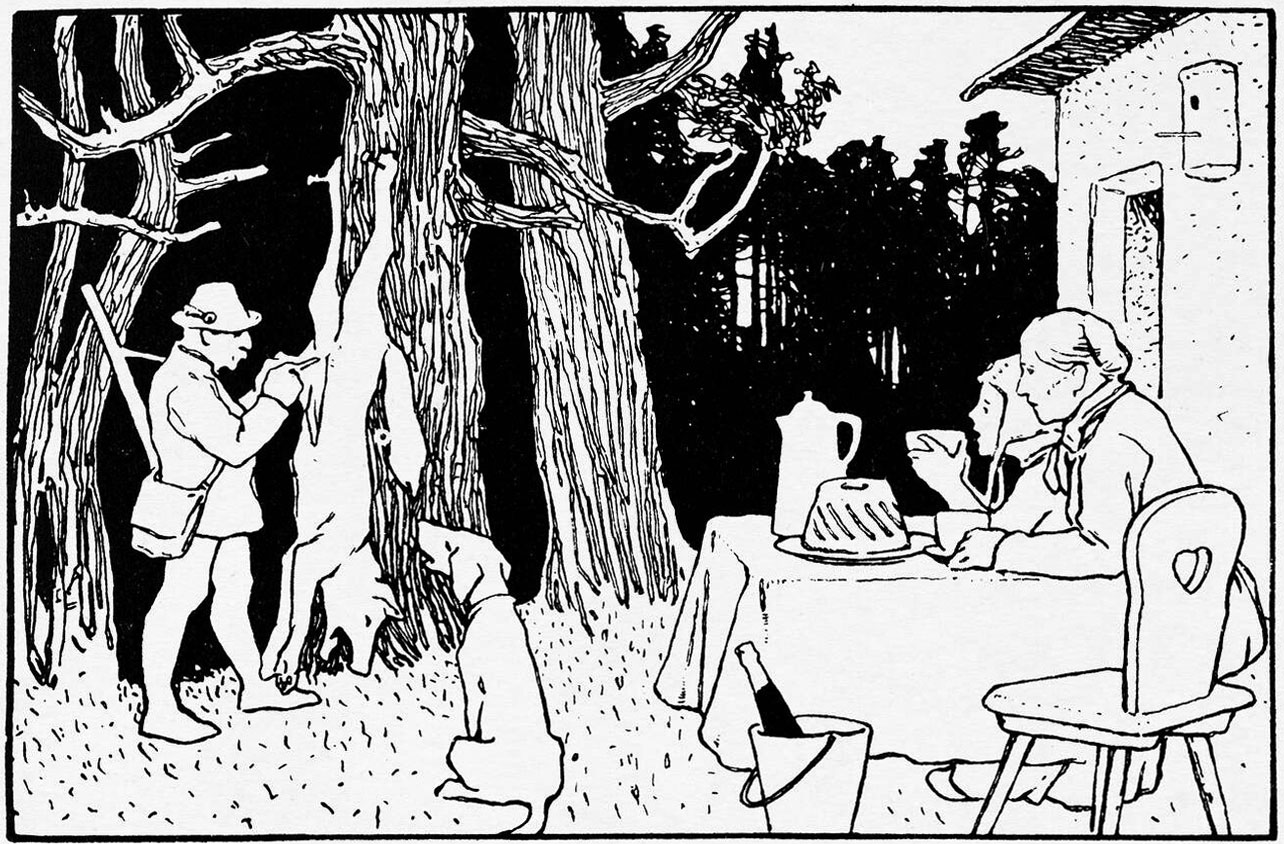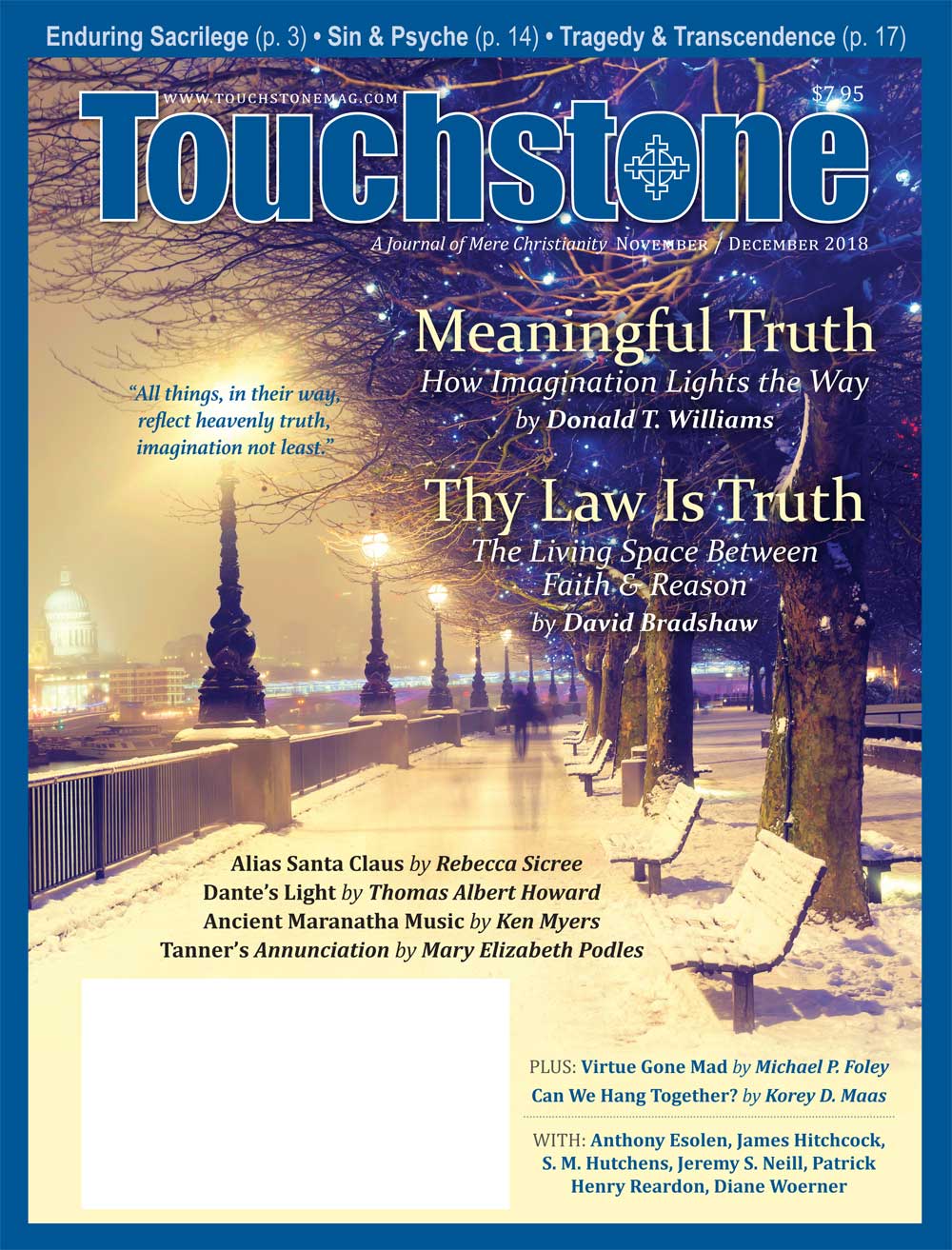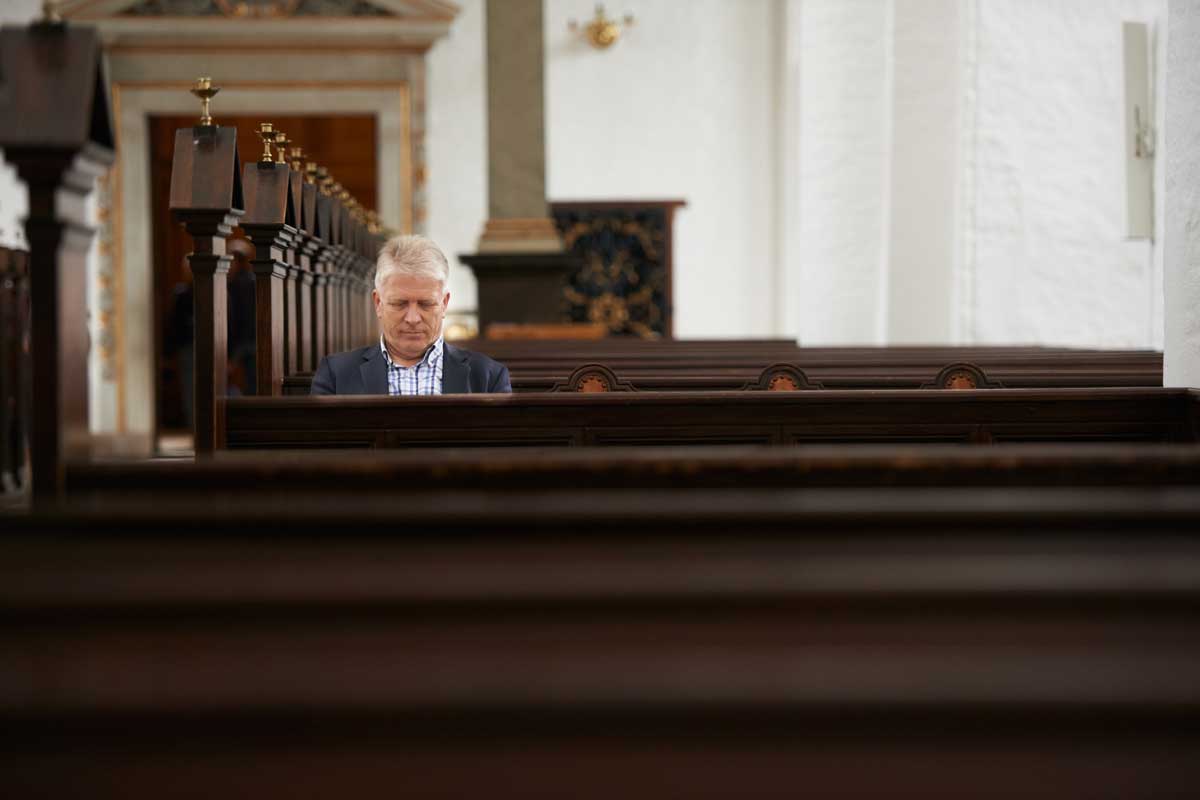Meaningful Truth by Donald T. Williams
Feature
Meaningful Truth
The Critical Role of Imagination in the Work of C. S. Lewis
by Donald T. Williams
After the storm there's a rainbow,
And all of the colors are black.
It's not that the colors aren't there;
It's just imagination we lack.
—Paul Simon
One thing that makes C. S. Lewis uniquely important as a Christian writer is the way he integrates reason and imagination in his expository writings as well as his fiction, all in the service of truth. But what is truth? Pilate's cynical question still demands an answer, and Lewis's is especially helpful because of the way it calls both Reason and Imagination into coordinated teamwork under Truth as their captain. So how did Lewis answer that question, and what does imagination contribute? It is more than just letting him write good stories to illustrate the truths he wants to communicate.
The Organ of Meaning
Lewis is solidly in the mainstream of Christian thinking about truth. Truth is a property of propositions such that they correspond with the state of affairs in the objective world that they purport to describe. Augustine and Aquinas, Calvin and Wesley, Cardinal Newman and Carl F. H. Henry would all have affirmed the same basic points, though not perhaps with Lewis's characteristically deft use of apt analogy. What Lewis adds to the discussion is some careful thinking about the relation of truth not only to reason but also to imagination. It was his experience and his conviction that "all things, in their way, reflect heavenly truth, imagination not least" (Surprised by Joy, 167). How exactly does imagination do so?
Some of Lewis's interpreters, influenced perhaps by the surface resemblance in language between Lewis and the English Romantics, have not paid sufficiently careful attention to the way Lewis answers that question. One reads statements such as "Lewis, like many Romantics, intuitively trusted the capacity of imagination to be a 'faculty of truth'" (Eliane Tixier, "Imagination Baptized," The Longing for a Form: Essays on the Fiction of C. S. Lewis, ed. Peter J. Schackel, 141).
What Lewis actually said when he analyzed the relation between imagination and truth was much more carefully and rigorously thought out:
We are not talking about truth but meaning: meaning which is the antecedent condition of both truth and falsehood, whose antithesis is not error but nonsense. I am a rationalist. For me, reason is the natural organ of truth; but imagination is the organ of meaning. Imagination, producing new metaphors or revivifying old, is not the cause of truth, but its condition. ("Bluspels and Flalansferes," Selected Literary Essays, 265).
Imagination is the faculty or organ not of truth (directly) but of meaning, which is the "antecedent condition" of truth. What does this mean?
Suppose I utter the proposition, "Blepple hloisats kleply flarg krunk bluzzles," and then ask you for a verdict on its truth or falsehood. I suspect you would be somewhat handicapped in trying to render that verdict by the minor problem that you would have no idea what I had said. Before you could even begin to form a judgment on the truth question, you would need to know what a hloisat is, how a blepple one differs from a regular one, what it is to flarg, what a bluzzle is, what is the quality of krunkness, and how flarging kleply differs from regular flarging. In order to give you that information, I would have to render these objects, qualities, and actions in concrete terms that you could visualize. Your imagination would be the faculty that enabled you to form a picture—an image—of what the proposition is asserting (or whether it is asserting anything). Then your reason could compare that mental picture to the picture of reality it has already tested and come to trust, in order to see if correspondence or contradiction resulted.
Imagination, in other words, doesn't give us truth. Reason for Lewis is the organ of truth. Just because we can imagine something does not make it real. But imagination combined with reason can give us meaningful truth, truth that impacts us on other levels besides mere intellectual assent. This is truth that can appeal to head and heart together. Lewis was the master of giving it to us, whether in his expository prose or his fiction. Examples abound: the hall and rooms of a house are an analogy for the Church and its denominations; two books that have always been resting one on the other for the eternal generation of the Son; the keys of a piano and a tune for the relationship between our instincts and the moral law; entrusting oneself to the waves and floating islands of Perelandra rather than sleeping on the fixed land for faith; the Stone Table for the Law and Aslan's death cracking it for the Gospel; Reepicheep the Mouse for valor, chivalry, and honor.
The brilliant artistic construction of these images does not prove that they are images of truth. But their presence in the context of the linear arguments and narrative trajectories of which they are a part makes the truths established by those lines of development mean something; it makes their impact, their beauty, and their relevance easier to see and to feel.
A Gleam of Divine Truth
Mythology for Lewis was one of the most important places where this contribution of imagination to our ability to grasp the meaning of true (or false) propositions is seen. It is well known that for Lewis, myth was not the opposite of truth, as it is in popular usage, but rather one way in which truth can be conveyed or embodied. Myth is not necessarily "lies breathed through silver" (as the pre-conversion Lewis once foolishly said to Tolkien), but can be "a real though unfocused gleam of divine truth falling on human imagination" (Miracles, 1947, 139n.).
Myth may convey these truths to the imaginations of readers, who might then independently verify them through reason and, hence, validly accept them as true. George MacDonald's modern mythic stories helped move Lewis in the direction of Christian faith by giving a meaning to the concept of holiness, even as Lewis's own stories have done for countless readers since. The mythical quality of a story refers, in Lewis's usage, to its meaningfulness rather than to its truth or falsehood as such, which must be established on other grounds. Hence, Lewis could without contradiction refer to the New Testament story of Jesus' birth, death, and resurrection as "myth become fact" ("Myth Become Fact," God in the Dock, 67).
Lewis is careful to use this language correctly even in his fiction. "Long since on Mars, and more strongly since he came to Perelandra, Ransom had been perceiving that the triple distinction of truth from myth and both from fact was purely terrestrial—was part and parcel of that unhappy division between soul and body that resulted from the Fall" (Perelandra, 143–144; cf. "Myth Become Fact," 66). Fact in this passage is the bit of reality that truth is about; truth is the account that corresponds to that reality; myth is the story that allows us to taste the particular tang of that fact. Ransom experiences in Perelandra the pre-analytical unity that lies behind the differentiated categories.
When one is inside a myth, in other words—say, on Perelandra with Ransom, or in Narnia with the Pevensies—one experiences the unified reality from which all three—fact, truth, and myth—flow. When talking about that experience later, one has perforce to use the differentiated language, and Lewis does so consistently. He was doing so even in his earliest Christian fiction: "Child, if you will, it is mythology. It is but truth, not fact; an image, not the very real" (The Pilgrim's Regress, 171). A true statement about reality is not reality; not even a mythical statement is reality; but it may be true nonetheless, i.e., it may correspond in a faithful manner to the reality it describes. Because the meaningful creating and sustaining acts of a personal, purposeful, and rational God are the ultimate source of all reality, there is indeed a real unity between fact and truth, and between both and myth, the most meaningful statement of truth. And some of this meaning may be stated propositionally, and some of those propositions may be confirmed by reason as true.
Lewis, then, embraces the traditional and standard correspondence theory of truth and enriches it by relating truth to imagination and myth. Truth is a property of accounts or propositions such that their assertions correspond with reality. Imagination is the organ of meaning, the antecedent condition of truth or falsehood, i.e., of the meaningfulness of those accounts claiming to be true or false. Reason, which distinguishes and discerns correspondence or non-correspondence (between those propositions and each other, between them and reality) and pursues their implications, is the organ of truth. Myth is a story that enables the imagination to receive and taste ways of seeing the world that reason can then confirm as true or false.
Perfect Analogies
So how do we apply these concepts apologetically in our own proclamation of the gospel? Well, how did Lewis apply them? He did it by doing in prose what Dr. Johnson said was the purpose of poetry: it is "the art of uniting pleasure with truth by calling imagination to the help of reason." The best way to understand that is to think about some of the examples we mentioned above.
Lewis does not limit his use of imagination to his fiction. It is the faculty that enables him to create such perfect analogies and word pictures for the concepts he tries to explain in his expository prose. The hall and rooms of a house as a picture of the church and its denominations is one of his more famous analogies. If you want to write about "mere" Christianity and have people relate to it properly, how do you achieve this? You want them to appreciate what all Christians have in common, but also to be loyal to a particular local church and its larger denominational family. Well, let them imagine a long central hall with rooms off either side. The rooms are unified by the hall as part of the same house. It is good to be in the house; at least you are out of the rain. But camping in the hall is rather awkward. It is in the rooms that there are fires and meals and conversation. Your imagination is what lets you picture the house and explore it and think about its implications. It is what lets you know what it means to belong in a Room that is part of that House.
Of course Lewis's most memorable uses of this technique are found in his fiction. The floating islands of Perelandra are arresting images in themselves, creating a landscape different from all those we know because it is ever changing. But then that picture turns out to be central to the plot of the novel, which has to do with the temptation of the Adam and Eve of that new world. The "forbidden
fruit" of Perelandra is sleeping on the fixed land, as opposed to the floating islands. Why? Because doing so would be an assertion of your own will to fix your own destiny rather than accepting the gift of what Maleldil sends you on the next wave. On the fixed land you wake up where you went to sleep; on a floating island you might be anywhere the next morning. You can have either a security of your own making, or a life of faith. Make your choice! The picture as imagined lets us understand what faith and trust and obedience really are and transfer that understanding to the real world.
The Old Story in a New Light
Many of us have heard about Jesus dying on the Cross to pay for our sins so many times that we have become anesthetized to it. But when Aslan the great Lion allows himself to be slaughtered on the Stone Table by the White Witch in place of the traitor Edmund, a couple of things happen. For one, our guard is down. Lewis explains what he was up to this way:
I saw how stories of this kind could steal past a certain inhibition which had paralyzed much of my own religion in childhood. Why did one find it so hard to feel as one was told one ought to feel about God or about the sufferings of Christ? I thought that the chief reason was that one was told one ought to. . . . But supposing that by casting all these things into an imaginary world, stripping them of their stained-glass and Sunday school associations, one could make them for the first time appear in their real potency? Could one not thus steal past those watchful dragons? ("Sometimes Fairy Stories May Say Best What's to Be Said," Of Other Worlds, 37)
Many people are prepared to testify that, yes, one could, for Lewis did.
The second thing that happens is that, whether our watchful dragons needed to be sneaked past or not, we see the old familiar story all over again, in a new light. The very freshness of these new images re-engages our imaginations to realize afresh what it means for an innocent victim to be sacrificed out of love. Details that are parallel not only remind us of what we knew about the original story but also create the opportunity to see new aspects of the meaning they always had. The shaving of Aslan's mane for the brutality and humiliation leading up to the actual crucifixion, the grief of Lucy and Susan for the gravity of what was sacrificed, the cracking of the Stone Table at Aslan's resurrection for the breaking of the power of the Law to condemn us—all these details allow our imaginations to enter anew into the depths of the meaning of the biblical story.
Two Final Points
Two points then in closing. First, has anyone noticed that we have seen this approach before? It is the very same teaching technique that Jesus used in his parables, which create vivid imaginative pictures to convey the Lord's theological points. We should appeal to imagination as well as to reason not just because it works, not just because it worked for Lewis, but because we have an even greater and more authoritative example than his to follow.
Second, I hope my readers will realize that I am not just exhorting them to use more and better illustrations. How many times have we come away from a sermon or a Sunday-school lesson remembering the illustration or the story but not the point it was supposed to be illustrating, much less the logical structure of the argument in which that point was imbedded? That doesn't happen with Lewis or Jesus, though, does it? Does anybody not remember what the Prodigal Son or the Sower and the Seed or the Good Samaritan was about? Does anybody remember Reepicheep's courage or Puddleglum's dogged faithfulness and not remember why they mattered? Has anyone forgotten what the undragoning of Eustace was really about? What's the difference?
Jesus and Lewis did not just use their imaginations alongside their reason. What they model for us is the full integration of imagination and reason. Illustrations and stories can't just be decorations added on; they must flow from a deep understanding of the content. This is a skill. It cannot be taken for granted. But it can be learned. We can improve at it. How? By paying attention to Jesus and to people like Lewis, not only in terms of their content but also their method. This will mean thinking their content through thoroughly and imagining it through. Start with Jesus' parables and Lewis's word pictures. Picture them in your mind as actually being played out. Meditate on that as well as on the abstract point being conveyed. Maybe that is part of what it means to be a disciple.
Donald T. Williams is Professor Emeritus
of Toccoa Falls College. He stays permanently camped out on
the borders between serious scholarship and pastoral ministry,
between theology and literature, and between Narnia and
Middle-Earth. He is the author of fourteen books, including
Answers from Aslan: The Enduring Apologetics of C. S. Lewis
(DeWard, 2023). He is a contributing editor of Touchstone.
Order
Print/Online Subscription

Get six issues (one year) of Touchstone PLUS
full online access including pdf downloads for only $39.95. That's only $3.34 per month!
Order
Online Only
Subscription

Get a one-year full-access subscription to the Touchstone
online archives for only $19.95. That's only $1.66 per month!
Order Touchstone subscriptions in bulk and save $10 per sub! Each subscription includes 6 issues of Touchstone plus full online access to touchstonemag.com—including archives, videos, and pdf downloads of recent issues for only $29.95 each! Great for churches or study groups.
Transactions will be processed on a secure server.

18.3—April 2005
Lions of Succession
on Being a Free Narnian & the Joy of Subordination by Donald T. Williams

33.2—March/April 2020
The Fairy Tale Wars
Lewis, Chesterton, et al. Against the Frauds, Experts & Revisionists by Vigen Guroian
more from the online archives

18.10—December 2005
A Mighty Child
on an Apostle’s Encounter with
the Son’s Children by Anthony Esolen

35.2—Mar/Apr 2022
Say Something
on Fatigued Christians Deciding to Engage the Culture by Keith Lowery
calling all readers
Please Donate
"There are magazines worth reading but few worth saving . . . Touchstone is just such a magazine."
—Alice von Hildebrand
"Here we do not concede one square millimeter of territory to falsehood, folly, contemporary sentimentality, or fashion. We speak the truth, and let God be our judge. . . . Touchstone is the one committedly Christian conservative journal."
—Anthony Esolen, Touchstone senior editor
Support Touchstone
00















